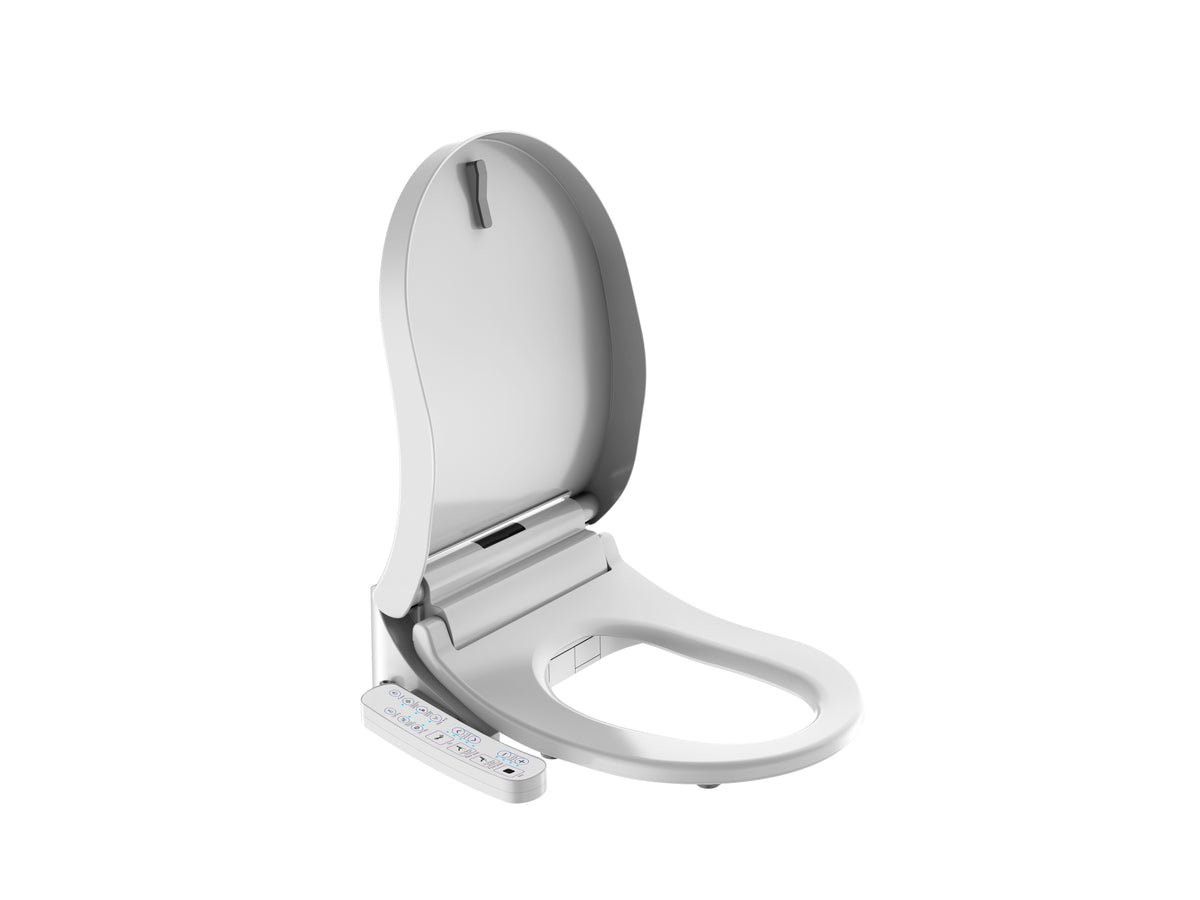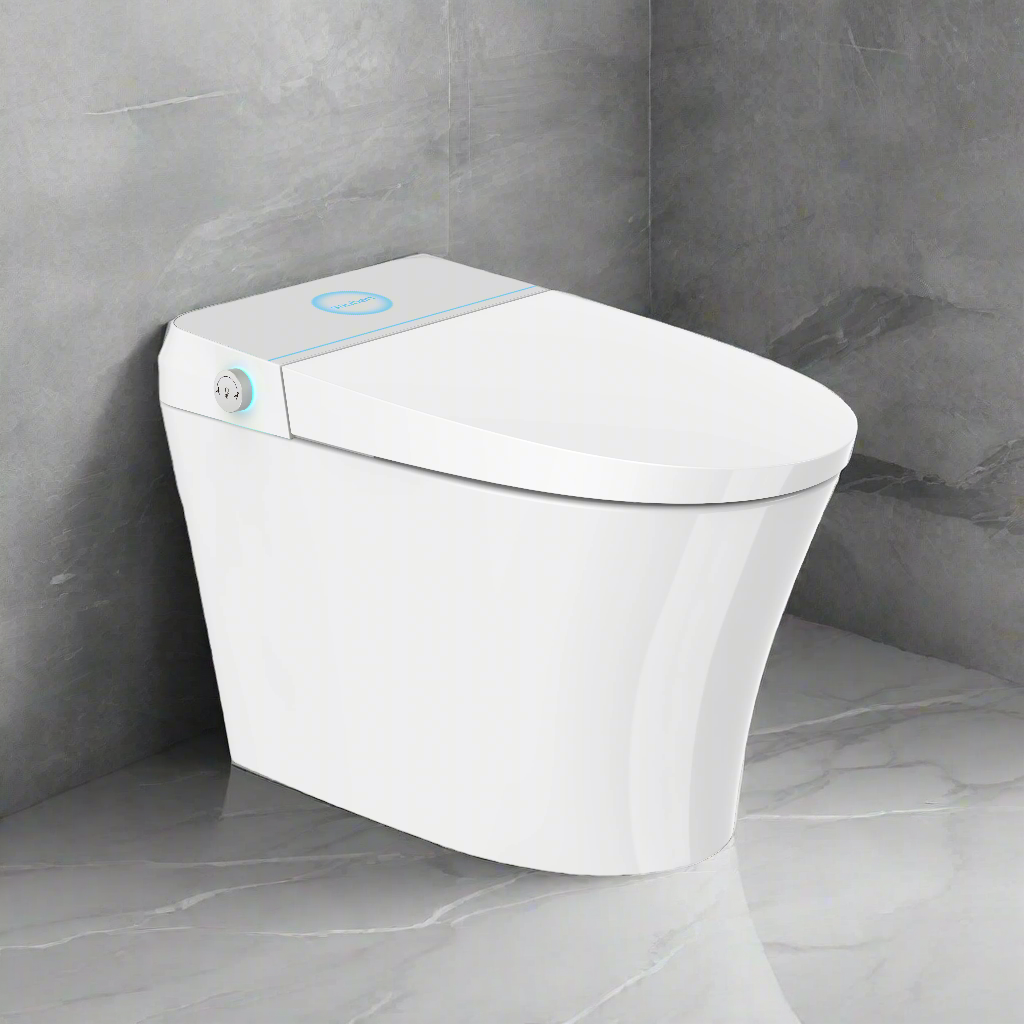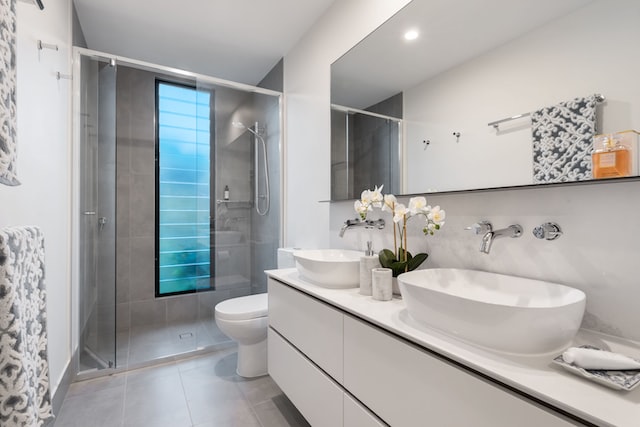Designing and decorating your bathroom with the well-being of everyone in mind is an important step to ensure that everyone in your household enjoys it. In particular, if you have elderly relatives or family members living with a disability, you'll want to ensure the bathroom is designed and fitted for their needs. Making changes to create a more disability-friendly environment needn't be daunting either; you can make some relatively easy adjustments – and these nine tips will show you just how simple it can be.
1. Consider your bathroom layout
If you have a family member or friend with a disability, consider ways to make your bathroom more accessible and comfortable for them. One way is to look at the layout of your bathroom. Consider if any furniture or fixtures might be blocking doorways or paths and if it makes sense to rearrange these items for more ease of movement.
Additionally, depending on the accessibility needs, you may want to install specific accessories, such as grab bars or raised platforms in and around the shower or bathtub area. Any modifications will go a long way in providing better accessibility and creating a more accommodating atmosphere for everyone who uses the bathroom.
2. Identify and remove any potential hazards
Having a disability-friendly bathroom is important for the safety and comfort of people with disabilities. Before undertaking any renovations, it is necessary to identify potential hazards in order to make sure the necessary changes are made to create an accessible bathroom. It includes inspecting the flooring for slick surfaces or rugs and mats, ensuring appropriate seating or grab bars are available, and ensuring pathways from the entry through to the vanity are clear and easy to manoeuvre around.

Additionally, proper lighting should be considered, particularly colour temperature and the ability of different light fixtures - such as nightlights - to be adjusted or dimmed. Once any potential hazards have been identified, replacing or adding features can help reduce risks and maximise a space's usability for people with disabilities.
3. Install handrails and supportive structures
Making your bathroom disability-friendly with the right handrails and supportive structures is an easy way to open up a world of possibilities. By installing appropriate grab bars and railings, you'll make it noticeably easier for seniors with limited mobility and other disability types to move from point A to point B in the bathroom.
Furthermore, having different heights available makes life easier for everyone, regardless of size or physical condition. Some additional features, like a padded seat or lower toilet, can provide the extra support needed while showering. With these simple convenience-minded improvements, your bathroom will be more accessible and inviting than ever!
4. Consider reach requirements
Making your bathroom disability-friendly can be an easy yet rewarding task. From installing a handrail or widening and levelling the entryway to utilising specifically designed fixtures or converting a bathtub into a walk-in shower, you can significantly increase accessibility in your restroom. Installing an adjustable-height sink or creating more space around the toilet and sink can help individuals in wheelchairs immensely.
Don't forget to create more storage options on the wall or inaccessible width base cabinets to ensure all items are within reach for everyone. Once these renovations are made, you'll enjoy greater independence and satisfaction when using your bathroom.
5. Use non-slip mats and minimise slippery areas
Making a bathroom more disability-friendly can be a safety precaution and an incredibly rewarding process. Installing non-slip mats reduces the risk of falls by providing a secure surface that absorbs water, prevents slips and increases traction in wet areas.

In addition, other surfaces should be checked to ensure they are free of obstacles and promote quality mobility, such as keeping toilet seat height comfortable, removing shower doors and ensuring adequate switching of showerheads. Small changes have made bathrooms much more easily accessible and discrimination-free for people with disabilities - creating a safe household for all to enjoy.
6. Add an emergency cord
Improving disabled access in the bathroom is an excellent way to make sure that everyone can use the restroom safely and comfortably. Installing an emergency cord or button allows disabled people to call for help if they need it, which reassures them that support is close by should anything happen.
In addition, this system can also be used to alert family members or carers of any potential problems, such as a disabled person feeling unsteady while showering. With this extra security in place, disabled people can use the bathroom with confidence and without hesitation.
7. Increase visibility
Making your bathroom accessible for people with disabilities doesn't just involve installing grab bars or widening the doorways. Increasing visibility can also be essential in making it easier for people with disabilities to navigate the space. Light switches, outlets, and appliances should be well-marked and easy to find. Allowing natural light into the bathroom can also help make it easier to see in the space. Consider swapping out traditional window coverings with cellular shades that filter natural light while still providing privacy.
Additionally, you can add reflective surfaces like mirrors or glossy paint to enhance visibility further and create a modern look simultaneously. Taking these steps will go a long way in making your bathroom as user-friendly as possible for everyone who uses it.
8. Improve ventilation
Making your bathroom disability-friendly is important in creating a welcoming and safe space for the disabled. Improving ventilation is one critical component in this process, as it can help not just with unwanted odours in bathrooms, but also with the humidity that can make it difficult to breathe.
Adding a fan, or even installing windows in the bathroom can help to keep the air fresh and circulating throughout the space - creating an environment that disabled people feel more comfortable using. This can be combined with other disabled-friendly additions such as adjustable shower heads or grab bars for extra convenience
Furthermore, improved ventilation can provide a more comfortable environment for those whose medical conditions require better circulation to be manageable. With proper exhaust fans and other aesthetic upgrades, making your bathroom more comfortable and pleasant by improving its ventilation is a simple way to show that you care about the needs of those around you.
9. Invest in disability-friendly toilets and fixtures
Going beyond conventional bathroom fixtures, investing in smart toilet seats and other disability-friendly toilet and fixture options can significantly improve the day-to-day experience of people with disabilities. A smart toilet seat offers comfort and eliminates manual transfers, reduces physical exertion for those who need it, and promotes independence for people with mobility issues or a wide range of disabilities.

The smart toilet seat is designed to sense when someone has leaned against it and automatically lower itself to a comfortable position. Hence, the user can move from their wheelchair to the toilet safely and independently. With smart restroom fixtures in your home, you can provide quality care for those struggling with disabilities, paving the way for a more inclusive space.
What are the UK's disabled bathroom regulations?
The UK has some of the most comprehensive disabled bathroom regulations in the world, supporting a range of disabilities and special needs. There are specific regulations on both accessible bathrooms, as well as other changing rooms, that must be adhered to in order to ensure safety and convenience for those with any type of disability or special need. These include properly wide entrances and exits, with built-in indicators for level access. Textured floors for heightened awareness and support rails surrounding the toilet area allow the user to manoeuvre safely, along with foot-operated taps to help those unable to use their hands or arms in this way.
In addition, the UK government has implemented strict guidelines that require disabled toilets to feature air conditioning, adequate space and an efficient waste disposal system so that everyone can enjoy using bathroom facilities without obstacles.
Are there any special considerations for elderly people?
Yes, elderly people may have additional requirements regarding disabled bathrooms. Elderly people can face various issues with mobility and strength, meaning disabled bathrooms should be designed to include features that make them easier for those who struggle with day-to-day tasks. It could mean opting for lever taps on sinks, so elderly visitors don't have to twist their wrists and struggle with turning a tap on or off. Toilets should also be equipped with grab bars, raised toilet seats, and easy-to-use light switches.
Walk-in baths are an excellent choice for disabled bathrooms as they provide easy access in and out of the bathtub without lifting or stepping over a high edge. There are also disabled shower options, such as level access showers and shower chairs which make getting in and out of the shower much easier for those with mobility issues. Alternatively, there's an option to apply for a Disabled Facilities Grant from your local council so you can install disabled bathroom fixtures and accessories to meet the needs of disabled people in your home.
At the end of the day, disabled bathrooms should be designed with disabled and elderly people in mind. There are plenty of options available to create a bathroom that's safe, accessible, and comfortable for all users. With the right design considerations and fixtures, you can ensure disabled visitors feel welcomed and respected in your disabled-accessible bathroom.
Conclusion
Creating a disabled bathroom can seem overwhelming, but with the right planning and understanding of disabled bathroom regulations, you can ensure disabled visitors feel comfortable using your facilities. From level access showers to grab rails, there are plenty of options available to make your disabled bathroom accessible and safe for all users.
Our smart toilet seats come fitted with a bidet, dryer, UV sanitiser and much more, making the toilet more accessible than ever for the mobility-impaired. Shop our full range of smart toilet seats today.


